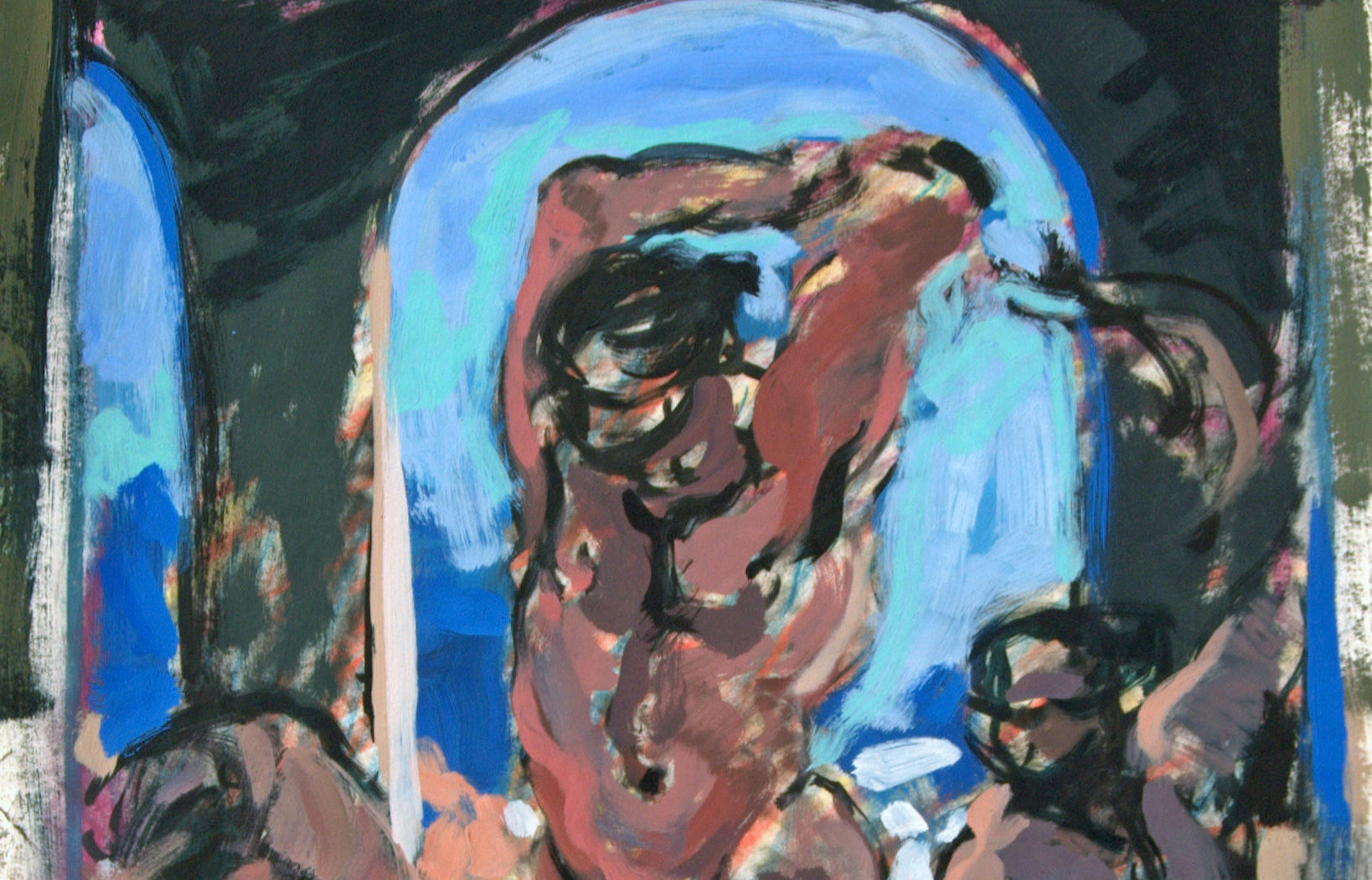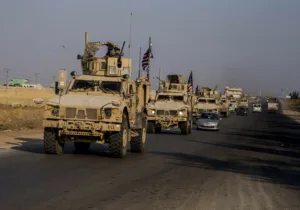This article on just war and how soldiers should love their enemies first appeared in the Summer 2016 issue of Providence’s print edition that came out last August. To read the original in a PDF format, click here. To receive future issues, subscribe here.
In the Christian view, the normative grounding from which the tradition of just war casuistry springs is the dominical command to love. Pace the Christian pacifists, there is no biblical prohibition against killing. This includes, of course, both the New Testament as well as the gospel revelation of Christ. While this specificity is redundant, it often tends to be necessary. However, and pace certain breeds of Christian realists—including the Niebuhrian kind—there is in this dominical command to love not simply an injunction to do so in our discreet, individual lives, but to love in the capacity of our public, that is our political, lives as well. Indeed, that the just war tradition can be claimed as a Christian ethic at all is owed to the fact that force, even of the killing kind, can be deployed as an expression of love.
According to the just war framework, wars may be justly fought only when a sovereign authority—over whom there is no one greater charged with the care of the political community—determines, in the last resort and with the aim of peace, that discriminate and proportionate force is necessary to retribute a sufficiently grave evil, to take back what has wrongly been taken, or to protect the innocent. In such cases, and only such, war may be required to restore justice, order, and peace—political goods without which no other political good can long perdure.
Seen in this way, that war can be an expression of love for the innocent neighbor under unjust assault is self-evident. If Christian love prompts a concern for the welfare of our neighbor we also have to be concerned for the quality of the neighbor’s neighborhood. If justice, order, and peace are essentials for a political community to enjoy other goods—such as health or life—with any degree of confidence, then we ought to be concerned about the presence of justice, order, and peace. I take the Christian part of Christian realism to include a measure of concern for not just our proximate next-door neighbor, but also our far-off foreign neighbor. While we are not responsible for them to the nth degree, it remains that when, prudently, we realize that we both ought to and can intervene against injustices abroad then, well, we do. And that this is something worth certain (not total) measures of our own blood and treasure. Naturally, prudence means these conditions won’t be met in all situations.
However, when our innocent neighbor’s rescue can only be procured at the cost of lethal force against his unjust assailants, then we are confronted with the problem of the corpse. The enemy-dead is a problem because the dominical injunction to love takes the wide-view and includes the enemy tormentor. Moreover, the injunction is without time constraints. We are to love our enemies now, in this moment, even when this moment is that in which the enemy is busying himself with savaging the innocent. But how do we love those whom we may be in the process of needing to kill? Can war, really, be an act of love?
According to Saint Augustine, and that stream of Christian realism in which he stands at its headwaters, it can. The just warrior loves his enemy, Augustine asserts in Contra Faustum, when he avoids the desire for harming, the cruelty of avenging, an unruly and implacable animosity, the rage of rebellion, the lust of domination and the like; or, as Augustine tells the Roman military tribune Boniface (Letter 189), when he cherishes “the spirit of the peacemaker” and recognizes that it is necessity and not happy-desire which prompts the conscientious warrior to “slay the enemy who fights against” him. For Augustine, as he writes to another tribune, Flavius Marcellinus, the use of violence is deployed against an enemy in order to punish him for his unjust aggressions with a sort of “kind harshness” that serves to constrain him, to prevent him from further wrongdoing, to confront him with his own injustice, and so to encourage him to repent and embrace peace.
Of course, to the question whether war can be an act of love, others will say “no”—and not just the pacifists. In his book, Issues in Military Ethics, the military ethicist Martin Cook posits in the chapter on “just war spirituality” that it is quite unlikely “in the midst of combat to maintain the kinds of attitudes and the psychological states that Christian just war writers hold out as the moral ideal for the Christian soldier.” In support, Cook gestures first to history, insisting that “few conflicts have even approximated the normative standards” of the just war tradition. In every war in recorded history, despite these “pretty clear in-principle guidelines”, conduct antithetical to the Augustinian prescription occurs: whether atrocities against the surrendered, the violation of rules of engagement, or the inability of warfighters in preventing their “attitudes toward the enemy—including the enemy civilian population—[from devolving] into contempt and even hatred.”
But this descriptive concern is secondary to the normative question of whether “the attitudinal expectations of the Christian tradition are realistic in the first place.” The doubt is partially grounded biographically. Augustine, like many of the theologians and academics arguing from within the just war tradition, was “far removed from the realities of combat”, having no practical military experience himself. While I may be less suspicious as to the degree this limits one’s “authority to opine” on the question than is Cook, the concern is clearly real. Cook’s own long-running practice, therefore, of grounding his speculative work in combat narratives is an appropriate means of seeking the anecdotal validation of those who have walked the battlefield. While such support cannot absolutely prove the veracity of any particular proposition, Cook’s approach demonstrates both wisdom and epistemic humility. I will follow it.
Against the just war attitudinal requirements, Cook deploys four “images of the enemy” drawn from J. Glenn Gray’s classic The Warriors: Reflections on Men in Battle. On the same day in May of 1941, Gray received two letters in the mail. The first was from Columbia University, informing him that he had been granted a doctorate in philosophy. The second letter ordered him to report for induction into the United States Army. Entering as a private, Gray became a special agent with the Army’s Counter-Intelligence Corps and served in both the North African and European theatres. He would be discharged as a second lieutenant in 1945, having received a battlefield commission during fighting in France. The Warriors is Gray’s un-romanticized meditation on what war does to human beings and why warfighters act as they do.
In Gray’s typology, these “images” are “ideal types” describing the common attitudes warfighters have toward those against whom they contend. The first image is of the enemy as a “comrade in arms” against whom one may use all destructive force necessary while he is still in the fight but whom we regard with the respect owed to any skilled professional who is simply doing his job. The second is that of the enemy as “totally evil” against whom our crusade must be absolute. The third image conceives the enemy as “a creature who is not human at all.” Against such loathsome enemy-beasts, the warrior is freed in his lethal force from the necessity of remorse. In the last image, the enemy is considered to be just another poor chump like me—an “essentially decent man who is either temporarily misguided by false doctrines or forced to make war against his better will and desire.”
Clearly, some of these images conform closer to just war prescriptions than others. The image of the enemy as unadulterated evil or a sub-human animal comport hardly at all. Rather, these images call to mind Gray’s observation that “most soldiers are able to kill and be killed more easily in warfare if they possess an image of the enemy sufficiently evil to inspire hatred and repugnance.” On the other hand, the images of the enemy as a peer professional or a generally decent person makes the task having to kill profoundly difficult. Gray writes:
It is nearly impossible for a combat soldier to prepare himself psychologically for bloody combat with a will to victory while holding such an image of his foe. How can he become enthusiastic about Operation Killer or look forward with eagerness to carrying out a superior’s orders to close with the enemy? The war itself is more likely to seem the greatest folly and criminality ever perpetrated. If he kills, he is troubled in conscience.
If this is correct, we have a problem, or rather a crisis. We see it manifest in the large number of psychiatric battle casualties suffered during combat in Iraq and Afghanistan. Indeed, throughout history combat veterans have staggered home suffering not necessarily from physical injuries—at least as classically perceived—but wounded all the same. I have in mind here “moral injury”—a proposed, if controversial, subset of Post (-combat) Traumatic Stress Disorder, or PTSD. Following clinical interaction with Vietnam veterans, VA psychiatrist Jonathan Shay began to recognize that many veterans all-too-often suffer symptoms atypical to their PTSD diagnosis. Instead of, or in addition to, the paranoia, hyper-vigilance, and other responses typical to life-threatening ordeals, many veterans anguish over what Shay termed “soul wounds”—crippling degrees of guilt, shame, sorrow, or remorse. This pointed to something new.
Over time, and through the corroborating work of other clinicians, moral injury has come to signify the harm that comes from committing, failing to prevent, or witnessing acts which transgress deeply held moral beliefs. It has become increasingly clear that while psychic wounds occur, appropriately enough, after atrocities—intended or accidental—warfighters are suffering moral injury from having performed the most basic business of war: killing a lawful enemy under conditions cohering with the rules of armed conflict and, moreover, commensurate with the dictates of reason and natural law.
As I have argued previously in Providence and elsewhere, I believe much of this is owed to a diminished confidence in the West—especially the Christian West—that love can be compatible with the use of force. This slide toward an increasingly maudlin view of love has been taking place for some time. In his own day, C.S. Lewis observed that we mistakenly conflate “love” with “kindness”, which he termed as “the desire to see others than the self happy; not happy in this way or in that, but just happy.” Believing that one cannot both restrain another’s actions and will their happiness, love has come to mean the antithesis of judgment and coercive power. One upshot of this is that too many people, including too many in uniform, now believe that killing is, and always is, malum in se—morally wrong in and of itself, even when required. We see this, if we look for it, in one combat memoir after another. It presents itself in some form of the locution, “I know that killing is wrong, but in war it is necessary.” Thus the very business of warfighting is rendered inevitably morally injurious.
This is not simply a theological or conceptual crisis. Clinical experience has shown that having killed in battle is the chief predictor of moral injury among combat veterans. In turn, moral injury has been shown to be the chief predictor of suicide among veterans. In those cases falling short of self-slaughter, moral injury is the chief predictor of functional impairments, violent behavior, substance abuse, marital and other relational difficulties, unnecessary risk-taking, and depression.
This brings to mind combat veteran Karl Marlantes’ lament in What It Is Like To Go To War, his memoir of the Vietnam War. “The violence of combat assaults psyches, confuses ethics, and tests souls,” he writes. “This is not only a result of the violence suffered, it is also a result of the violence inflicted.”
Marlantes recounts a fierce assault he led up a steep hill laced with interconnecting fighting positions. From one of the positions above, a Vietnamese soldier kept dropping grenades blindly down on him and his team. Knowing it was only a matter of time before one of the explosions killed them both, Marlantes’ buddy pinned down the soldier with a grenade toss of his own while Marlantes maneuvered into a flanking position. In place, he quickly settled the stock of his weapon into his shoulder and waited for the enemy soldier to pop up again. Marlantes writes:
Then he rose, grenade in hand. He was pulling the fuse. I could see blood running down his face from a head wound. He cocked his arm back to throw—and then he saw me looking at him across my rifle barrel. He stopped. He looked right at me. That’s where the image of his eyes was burned into my brain forever, right over the sights of my M-16. I remember hoping he wouldn’t throw his grenade. Maybe he’d throw it aside and raise his hands or something and I wouldn’t have to shoot him. But his lips snarled back and he threw it right at me.
As the grenade left his hand, Marlantes fired. The soldier died and the grenade detonated harmlessly. When Marlantes asks himself what he felt then, he answers: pleasure and satisfaction—he was alive! That felt good. Relief, no more grenades! Another obstacle was out of the; that felt good too. “But,” he admits, “it also felt just plain pleasurable to blast him…There is a primitive and savage joy in doing in your enemy.”
Now, however, he feels differently. Now he has the time to imagine the NVA soldier as one of his own sons. He sees him trapped, filled with fear as he battles against these huge Americans who charge “relentlessly from out of the jungle, swarming up the hill, killing his friends in their holes around him.” In his sensitized state, Marlantes envisions the boy’s final moments: wounded, knowing that “death is coming in a crummy little hole hundreds of miles from his family, and he has never made love to a woman and he will never know the joys and trials of a family of his own.” Marlantes asks, “My feelings now? Oh, the sadness. The sadness. And, oh, the grief of evil in the world to which I contributed.” He continues:
What is different between then and now is quite simply empathy. I can take the time, and I have the motivation, to actually feel what I did to another human being who was in a great many ways just like my own son. Back then I was operating under some sort of psychological mechanism that allowed me to think of that teenager as “the enemy.” I killed him…and…moved on. I doubt I could have killed him realizing he was like my own son. I’d have fallen apart. This very likely would have led to my own death or the deaths of those I was leading.
With Gray’s typology and testimony such as Marlantes’ in hand, Cook advances an uncomfortable conclusion:
It appears that the normative Christian tradition’s central idea that Christian soldiering is acceptable only if accompanied by a continual “spirit of a peacemaker” who approaches his distasteful task mournfully is fundamentally at variance with psychological possibility.
Perhaps so; indeed certainly so if the just war tradition’s central ideas are simply mandates—a set of free-standing rules, perhaps chosen by fiat, to which warfighters are compelled, on pain of impiety, to adhere. But that is not how the attitudinal requirements of the just war tradition are to be conceived. Undoubtedly, neither Augustine nor Thomas Aquinas considered them thus. The just war character, as I’ve already insisted, is grounded in love. Love, of course, is rather inimical to external control; it cannot be forced. Human love is made possible, in the first place, only because God gave to His human creation the gift of freedom. While love cannot be forced, it can be cultivated. The just war character traits are not the product of rules. They are the manifestations of virtue.
There are many ways of cultivating virtues. I will move toward my conclusion by discussing one. Recall that I began by saying that the ground of the just war tradition is the dominical command “to love.” No good command, certainly no dominical one, is arbitrary. Rather, divine commands serve a good. Drawing on the sixteenth chapter of Matthew, Oxford ethicist (and Providence contributing editor) Nigel Biggar reminds us that we are to love our neighbor, including our enemy-neighbor, because it is good for us to do so—it profits us. Biggar is asserting here that the fundamental rationality of both the just war tradition and the internal dispositions that accompany it emerge from the same ethical grounding: that is, the promotion of true human happiness, or eudaemonia, genuine human flourishing. Recalling C.S. Lewis, eudaemonia is emphatically not “just happy”—it is happy in very particular ways. Expounding on the profit of enemy-love, Biggar writes:
The relevant profit, however, is not extrinsic but intrinsic, and its currency is not money but virtue. It is good that we should grow in the virtues of benevolence and justice; it belongs to our own good or flourishing that we should become benevolent and just. And that will remain true, even if it should cost us our very lives; for God—judging by his resurrection of Jesus—will recover the righteous (or, better, the faithful) from death.
Asserting that the Christian ethic grounding the just war tradition is essentially eudaemonist helps to shift the focus from the attitudinal dispositions themselves to why those are the dispositions in the first place. Doing so helps to clarify that Augustine’s imperative to the just warrior to “cherish the spirit of the peacemaker”, isn’t simply the first of the internal characteristics of the just warrior; it is the one from which the others take their cue. To war with the spirit of the peacemaker is to remember that the human neighbor deserves to be loved; it is to presuppose their value. To be sure, some among our enemies have so habitually defaced their own dignity through the eager embrace of monstrous evil that their deaths appear to involve the loss of nothing good. But this exception proves the rule, as Biggar notes in his In Defence of War. It is a tragedy, he asserts, “that someone should have so misdirected their lives that their death amounts to a moral gain and not a loss.” To kill a person is always to commit an evil—though not always a moral evil—because “it is to cause the death of someone with an equal calling to discern, interpret, embody, and represent what is good in the world.”
Because the neighbor is worthy to be loved, the just warrior keeps the goal of peace as the chiefly desired end: in the first place for the tormented-neighbor through their rescue but, in the second place, to the enemy-neighbor through establishing the conditions that, alone, might lead to reconciliation. That the motive for all of this is love ought to be clear to anyone with children. On more than one occasion, Augustine made plain that parenting is a study in the interpenetration of love and justice. Among the many corollaries, a loving father gives his children their due. When praise is what their child’s actions warrant, then praise is dispensed; when a rebuke, then a rebuke; when a stronger restraint, then a stronger restraint is employed to prevent the child from further wrongdoing, to confront him with his own injustice and to point him toward what he ought to be, and so to encourage him toward repentance and the mutual joy of fully restored relations.
Seen in this light, war is recognized as not simply the extension of politics but the extension of the interaction of justice and love in everyday life but now, tragically, to the nth degree. Because of this, when it comes to how we are to regard our enemy, the Christian just war tradition introduces no new moral legislation. Gray’s four-point typology is ultimately insufficient: the image of the enemy that the just warrior embraces is simply the image of what the enemy has always rightly been: our neighbor.
How all of this might play out on the battlefield can be seen by returning to Marlantes. Recall that Marlantes contends that had he been aware of his love for that Vietnamese boy then, in the midst of combat, he never would have been able to kill him. But, if I might suggest, Marlantes’ own testimony seems to stand against his claims. After he and that boy locked eyes over the sights of his M-16, he hesitated. He hesitated long enough to hope the kid would not throw the grenade, that he might, instead, simply toss it harmlessly aside and raise his hands “or something”, and he would not need to be shot. What is that about: that silly, foolish, naïve hoping-against-any-reason-to-hope hope in the midst of combat? It is desiring that you might not have to do the terrible, and terribly necessary, thing when that necessary thing means bringing harm to the human being positioned against you. In this “interval of hesitation”—that luminous moment in the midst of raw, red, flesh-hewn conflict—Marlantes encountered the neighbor before him. By my lights, that was love.
And then Marlantes killed him.
The just war proposal I have been advocating does not see a contradiction in hoping for peace but engaging in war, and weeping over it after the fact. Granted, the image of the enemy-as-neighbor requires the cultivation of a certain callousness—much as the surgeon needs it when cutting away limbs to save lives, as does a parent when punishing an errant child, so too a warfighter when stopping an enemy by slaying him. If everyday life furnishes us plenty of occasions in which we must thicken our skin to do the right thing despite painful—even destructive—side effects, how much more will a life in a combat zone? But callousness, like other forms of distancing, betrays itself. It makes plain that the calloused heart can be the one that, in fact, grasps the gravity of the present task. With a kind of peripatetic moderation, the calloused warfighter knows it must not be too easy, nor too hard, to make the necessary kill.
All the while there is sorrow—the image of the enemy-as-neighbor means that we never rejoice in getting to kill, but lament in having to. It is, perhaps, only in this way that it is possible both to recognize the humanity of the enemy and to kill again and again and again and yet not be a man of blood. Thus, only thus, might it be possible to navigate the morally bruising theatre of war without becoming, oneself, morally bruised.
—
Marc LiVecche (PhD, University of Chicago) is the managing editor and Scholar of Christian Ethics, War, & Peace at Providence
Photo Credit: A U.S. Marine contemplates the corpse of a fallen North Vietnamese soldier during Operation Prairie, 1966. Based on an original photograph by Larry Burrows, for Time.







 Live in the DC area? Sign-up for Providence's in-person events list!
Live in the DC area? Sign-up for Providence's in-person events list!